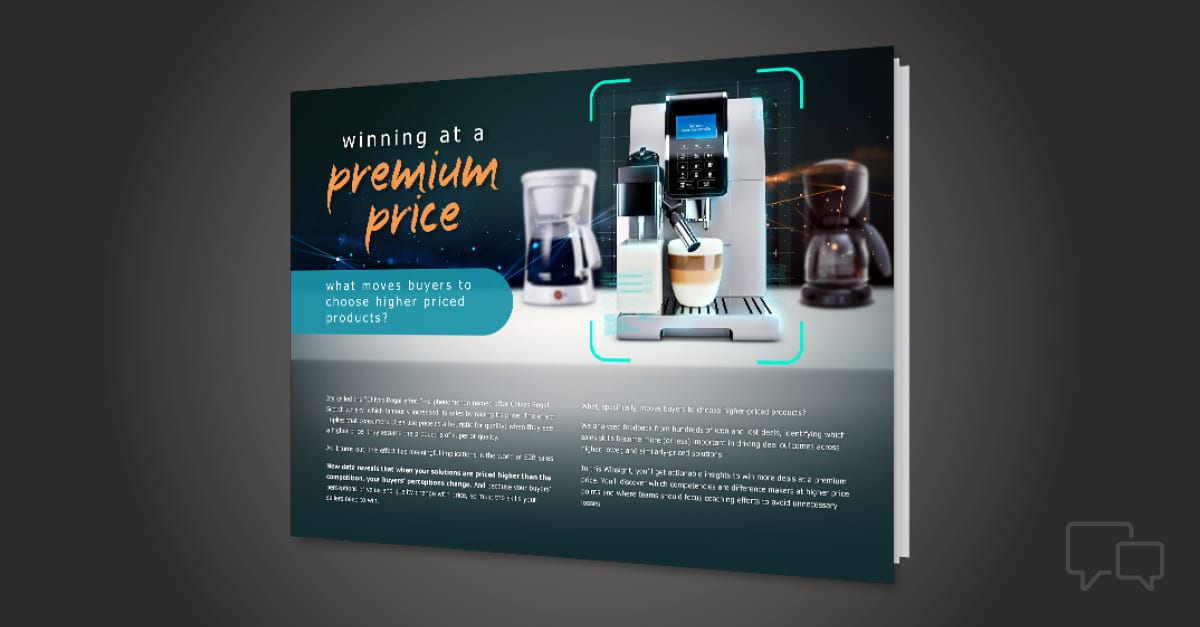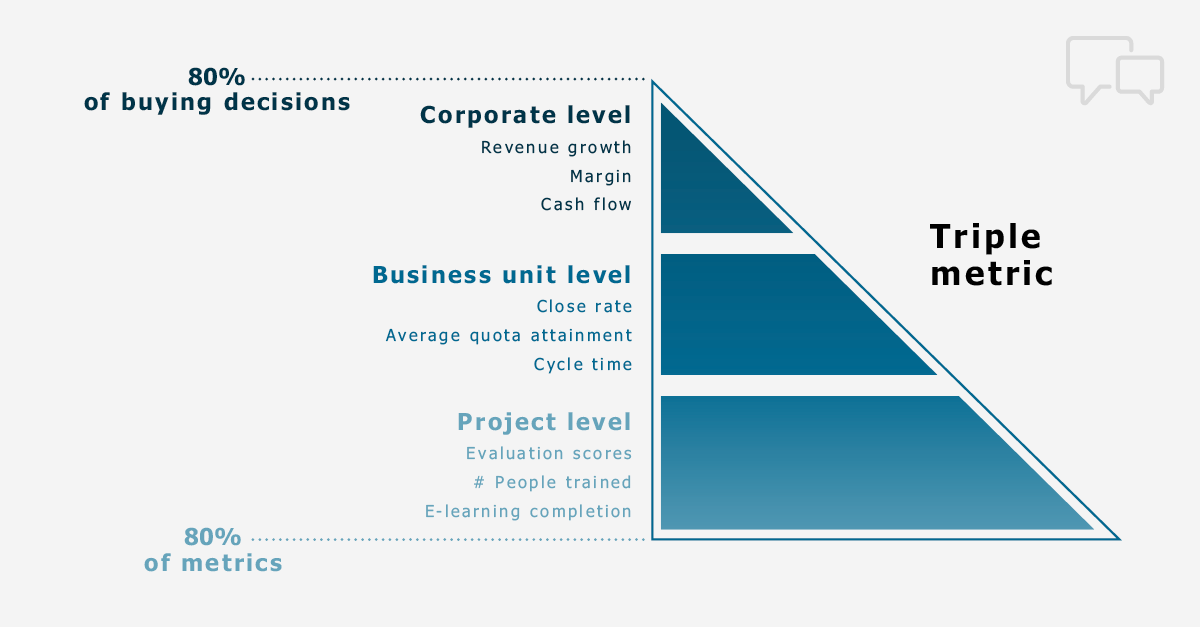When running win-loss analysis or a voice of the customer (VoC) program, you must be able to show the value and impact to executives and key stakeholders.
It’s all too easy to report on metrics like utilization and customer satisfaction.
Yes, these metrics are important, but they’re not what most executives care about when they want to measure success.
If you want to keep executives engaged and excited about the outcomes, you must report on the metrics that influence your company’s strategic goals.
How can you identify the right key performance indicators (KPIs) to measure? And what about the metrics that other stakeholders care about?
Often, the metrics they really value can be found easily in win-loss and VoC programs. You can use the customer insights and win-loss feedback on overall business goals, operational efficiency, and the success of specific projects to show how you’re tracking to your KPIs.
use the triple metric to map your KPIs
The Triple Metric is a useful framework for measuring KPIs that truly matter to stakeholders at all levels of the organization.
At its core, it’s about defining goals and metrics on three distinct levels: The corporate level, the business unit of department level, and the project level.
When documenting results and reporting KPIs, your goal is to establish a clear link between project-level metrics, department outcomes, and overall corporate goals. Without this connection, your results lose power, and so does your win-loss program.
Here’s a detailed list of the best KPIs to measure with buyer feedback at all three levels.
key performance indicators at every level
corporate-level KPIs
At the corporate level, show that win-loss analysis and VoC programs are instrumental in guiding strategic decisions and fostering long-term growth.
- Market share impact: Assess how insights from win-loss analysis and VoC feedback contribute to changes in market share, indicating the effectiveness of strategic adjustments based on buyer feedback.
- Customer retention rate: Measure the impact of VoC-driven initiatives on customer loyalty and retention, linking customer feedback directly to business sustainability.
- Revenue growth attributed to buyer insights: Track the increase in revenue directly tied to strategic changes, by looking at prospect and customer feedback on things like product enhancements or service improvements.
- Cost of customer acquisition vs. customer retention: Analyze how efficiently the company is spending on retaining existing customers versus acquiring new ones, especially in light of learnings from win-loss analysis.
- Customer lifetime value (CLV) trends: Monitor changes in CLV as a result of implementing strategies based on win-loss and VoC programs, indicating the long-term financial impact of customer-centric strategies.
business unit or department-level KPIs
Metrics at this level should reflect how win-loss analysis and VoC initiatives improve operational efficiency, customer satisfaction, and team performance within specific departments.
- Win-loss ratios by department: Track win rates for sales or account-based marketing departments, providing insights into the effectiveness of different strategies and the quality of customer engagement.
- Win rate changes following win-loss and VoC initiatives: Measure changes in seller and service rep’s skills and win rates after implementing changes based on buyer feedback. This includes how prospects and customers score each team member on specific skills and the overall experience.
- Departmental satisfaction scores: Evaluate customer satisfaction scores for specific departments, such as support or service, before and after implementing VoC-driven improvements.
- Employee engagement and turnover rates: Monitor changes in employee engagement and turnover rates following the implementation of feedback mechanisms derived from win-loss analyses.
- Innovation rate: Measure the rate at which new ideas or improvements are implemented within departments as a result of VoC and win-loss insights.
project- or program-level metrics
At the project or program level, metrics should demonstrate the direct impact of specific initiatives derived from win-loss and VoC feedback on achieving tactical goals.
- Implementation success rate of VoC-driven projects: Track the percentage of projects initiated from VoC feedback that are completed successfully, on time, and within budget.
- Service level agreement (SLA) compliance: Compare SLA rates before and after implementing service improvements suggested by your customer feedback.
- Quality improvement metrics: Monitor specific quality metrics, such as service failures, before and after implementing changes based on win-loss analysis.
- Feedback loop efficiency: Measure the time it takes from receiving prospect or customer feedback to implementing changes and communicating back to them, indicating the efficiency of the feedback process.
- Return of Investment (ROI) of VoC and win-loss initiatives: Calculate the ROI for specific projects that were initiated as a result of VoC or win-loss analysis, linking tactical improvements to financial performance.
drive success with data-driven decision making
An effective win-loss analysis or VoC program isn’t about drowning in data for the sake of it. It’s about getting smart, insightful metrics that link directly to your company’s strategic goals.
By embracing KPIs that reflect the true value of buyer feedback and customer insights, you not only keep executives leaning in, but you also ensure that other stakeholders in your organization understand the benefits.
Remember, strategic KPIs are the backbone of impactful win-loss analysis and VoC efforts. So, use them to highlight successes, uncover opportunities, and steer the conversation from mere data points to strategic business advancements. Because in the end, it’s about making decisions that aren’t just data-backed, but data-bold, ensuring everyone in your organization sees how these programs impact success.






